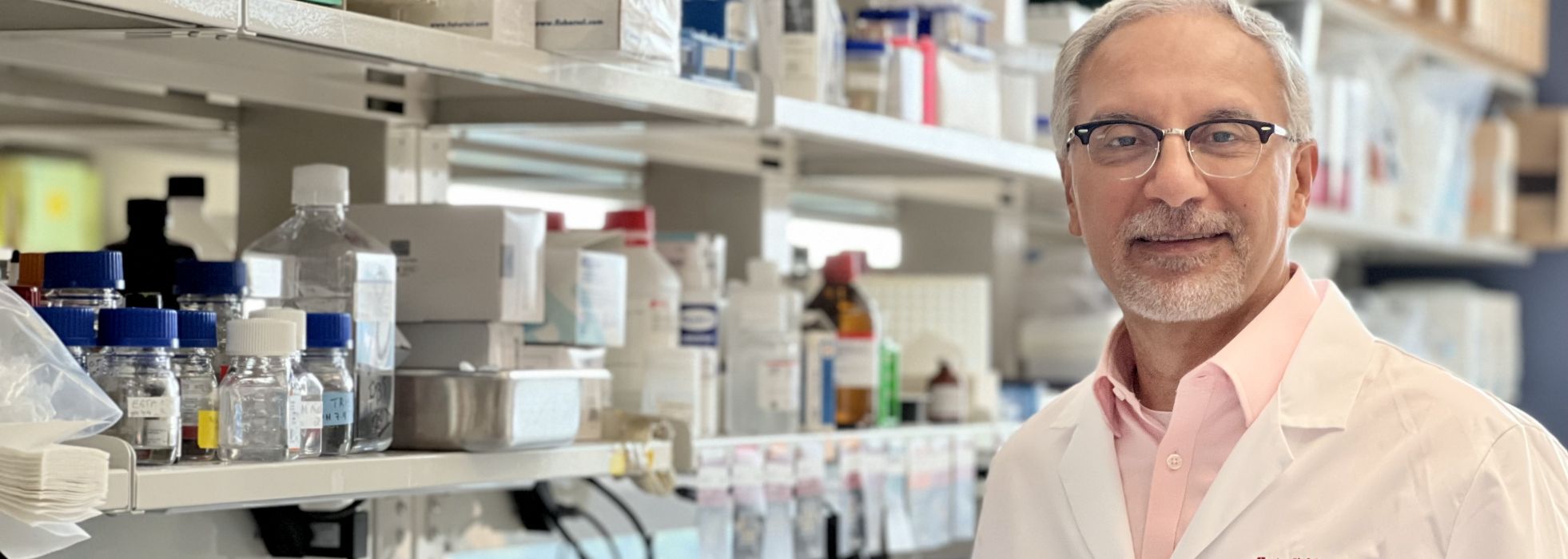Calcium-Triggered Arrhythmias
Héctor H. Valdivia, MD, PhD, is an established investigator leader in the field of excitation-contraction coupling of the heart and calcium release channels/ryanodine receptors.
Since its inception in 1994, his laboratory has been continuously funded by the National Institutes of Health to investigate the normal and pathogenic role of ryanodine receptors in cardiac physiology and disease.
His research has led to the discovery of a novel family of ryanodine receptor ligands with potential therapeutic value to treat cardiac arrhythmias.

Calcium Signaling in the Normal and Diseased Heart
Dr. Valdivia’s lab uses transgenic animal models of catecholaminergic polymorphic ventricular tachycardia (CPVT) and other arrhythmogenic cardiomyopathies to understand the molecular and cellular mechanisms underlying congenital calcium-triggered cardiac arrhythmias and to develop novel therapies.
Dr. Valdivia discovered imperacalcin, a scorpion peptide and founding member of the calcin family of ryanodine receptor ligands. He is using these peptides as lead molecules to develop pharmacological therapies to treat disturbances of calcium homeostasis in the heart, including CPVT and other arrhythmogenic syndromes.

We are looking for motivated fellows, preferably at the post-doctoral level, to join our lab for a NIH-funded research experience in cardiovascular physiology and pathophysiology. If you are interested, please email Dr. Valdivia.
Active Projects
- Mechanisms of Ryanodine Receptor Modulation by Phosphorylation
Phosphorylation of cardiac ryanodine receptors (RyR2) by PKA and CaMKII is an integral part of the concert of events by which β-adrenergic receptors produce inotropic and lusitropic effects on the heart. Yet, the functional effect of phosphorylation on single RyR2 channels remains elusive.
We have generated key experimental animals and toolkits that will allow us to test with unprecedented integrative level the physiological and pathophysiological role of RyR2 phopshorylation and dephosphorylation in molecular, cellular, whole heart and intact animal settings.
These studies are therefore likely to provide fresh, novel insight into the mechanisms that control RyR2 phosphorylation and the functional consequences of this process for the calcium homeostasis of cardiac cells.
- Partial Depletion of SR Calcium by RyR Agonists Prevents Calcium-Dependent Arrhythmias
Hyperactivity of the cardiac ryanodine receptor/calcium release channel of the sarcoplasmic reticulum (RyR2) may lead to ventricular fibrillation and other lethal cardiac arrhythmias, such as occurs in the arrhythmogenic syndrome catecholaminergic polymorphyc ventricular tachycardia (CPVT), a congenital disease affecting children and young adults with an apparently normal heart. β-blockers are the standard therapy for CPVT, but they often result in incomplete protection.
We discovered that selected scorpion venoms contain calcins, a family of peptide ligands of RyR2 that are able to penetrate cellular membranes and mitigate calcium-dependent arrhythmias due to RyR2 hyperactivity.
In this study, we have developed a rationalized and novel paradigm for the treatment of CPVT based on calcins. These results may be applied to other cardiomyopathies where controlled unloading of intracellular calcium may be desirable.
Funding Support
Dr. Valdivia's research is supported by these National Institutes of Health grants:
- Mechanisms of Ryanodine Receptor Modulation by Phosphorylation. R01-HL055438-23 (Valdivia HH, PI)
- Partial Depletion of SR Calcium by RyR Agonists Prevents Calcium-dependent Arrhythmias. R01-HL167195-01 (Valdivia HH, Alvarado FJ, PIs)






